Related Research Articles
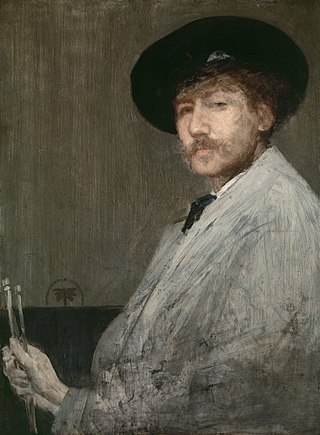
James Abbott McNeill Whistler was an American painter in oils and watercolor, and printmaker, active during the American Gilded Age and based primarily in the United Kingdom. He eschewed sentimentality and moral allusion in painting and was a leading proponent of the credo "art for art's sake".

Kelvingrove Art Gallery and Museum is a museum and art gallery in Glasgow, Scotland. It reopened in 2006 after a three-year refurbishment and since then has been one of Scotland's most popular visitor attractions. The museum has 22 galleries, housing a range of exhibits, including Renaissance art, taxidermy, and artefacts from ancient Egypt.
The Glasgow School was a circle of influential artists and designers that began to coalesce in Glasgow, Scotland in the 1870s, and flourished from the 1890s to around 1910. Representative groups included The Four, the Glasgow Girls and the Glasgow Boys. Part of the international Art Nouveau movement, they were responsible for creating the distinctive Glasgow Style.

Frederick Ronald Williams OBE was an Australian painter and printmaker. He was one of Australia’s most important artists, and one of the twentieth century's major landscapists. He had more than seventy solo exhibitions during his career in Australian galleries, as well as the exhibition Fred Williams - Landscapes of a Continent at the Museum of Modern Art in New York in 1977.

Albert Joseph Moore was an English painter, known for his depictions of languorous female figures set against the luxury and decadence of the classical world.

Thomas John Honeyman was an art dealer and gallery director, becoming the most acclaimed director of Kelvingrove Art Gallery and Museum, Glasgow.
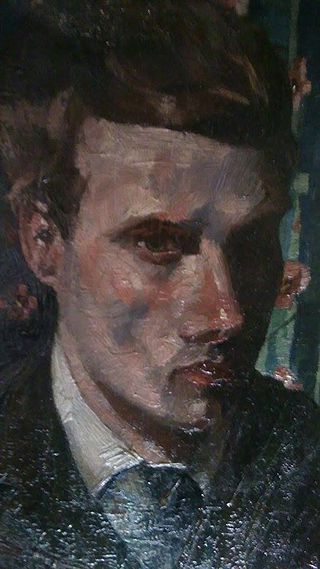
John Quinton Pringle was a Scottish painter, influenced by Jules Bastien-Lepage and associated with the Glasgow Boys.

Paul Durand-Ruel was a French art dealer associated with the Impressionists and the Barbizon School. Being the first to support artists such as Claude Monet, Camille Pissarro, and Pierre-Auguste Renoir, he is known for his innovations in modernizing art markets, and is generally considered to be the most important art dealer of the 19th century. An ambitious entrepreneur, Durand-Ruel cultivated international interest in French artists by establishing art galleries and exhibitions in London, New York, Berlin, Brussels, among other places. Additionally, he played a role in the decentralization of art markets in France, which prior to the mid-19th century was monopolized by the Salon system.
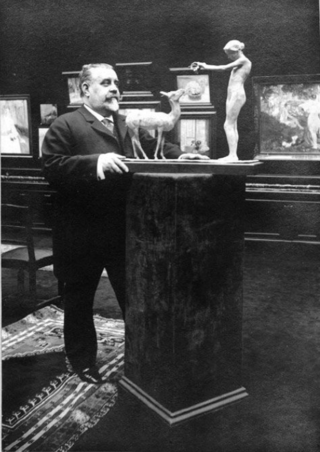
Georges Petit was a French art dealer, a key figure in the Paris art world and an important promoter and cultivator of Impressionist artists.

Williams & Everett (est.1855) in Boston, Massachusetts, was an art dealership run by Henry Dudley Williams and William Everett. The firm sold original artworks by American and European artists, as well as "photographs and carbon-pictures of eminent persons, noted places, and famous paintings." It also continued the mirror and picture frame business that had been established earlier by the Doggett brothers.
Jacques Seligmann & Co. was a French and American art dealer and gallery specializing in decorative art and antiques. It is considered one of the foremost dealers and galleries in fostering appreciation for the collecting of contemporary European art. Many pieces purchased through Jacques Seligmann & Co. now reside in the collections of fine art museums and galleries worldwide, donated to those institutions by private purchasers of work from the dealer.
Henry Heydenryk Jr. (1905–1994) was a Dutch American frame maker, historian, writer and designer. He was the fourth generation descendant of a family-run business, The House of Heydenryk (Heijdenrijk). Founded in Amsterdam in 1845, the company is one of the world’s oldest framing companies. The firm made and supplied reproductions and antiques to the Tate and National Gallery museums in England, the Rijksmuseum in the Netherlands and for many other important museums and private collectors including Baron Thyssen-Bornemisza and members of the Rothschild family.
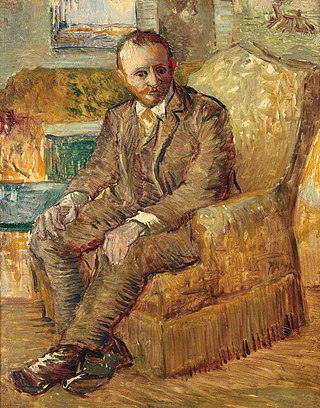
Alexander Reid (1854–1928) was a Glasgow art dealer and amateur artist, and friend of James Abbott McNeill Whistler and Vincent van Gogh. He was one of the most influential art dealers in Europe in the early 20th century, exhibiting and selling artworks by some of the finest artists of his period, including the Impressionists, the Post-Impressionists, the Glasgow Boys and the Scottish Colourists. He helped build up the French painting collection of Sir William Burrell. and many of the works he dealt with now feature in major private, civic and national art collections all over the world. Within the Scottish art world he was called Monticelli Reid.
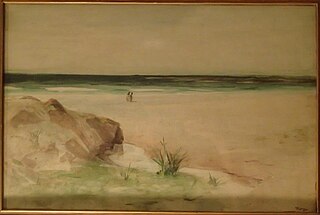
Frank Laing was a Scottish painter and etcher. He is best known for his watercolours and etchings of European landscapes and architectural subjects. Born in Tayport, Fife, Laing lived and worked throughout Europe, producing a portfolio of notable work from Spain, Paris, Chartres, Antwerp and Venice before returning to Scotland.
James Ardern Grant (1885–1973), was an English printmaker, painter and teacher, who worked mostly in portraiture.

For the dancer born Gertrude Hayes see Gertrude Hoffmann (dancer)
Annie Rose LaingnéeAnnie Rose Low was a Scottish artist, known for her paintings of landscapes, children and interiors.

Margaret Hamilton was a Scottish artist known for her paintings and embroidery work.
William Robinson Watson was an English-born Canadian art dealer who, through his staunch friendships with artists and his energetic enthusiasm for their work, helped establish the market for Canadian art. By the second half of the 1920s, he was Montreal's leading art dealer.
References
- ↑ Age 57/67 in Scotland census 1891/1901 at 10 Dalziel Drive, Glasgow.
- ↑ "Connell and Sons". learn.bowdoin.edu.
- ↑ "Connell & Sons | Artist Biographies". www.artbiogs.co.uk.
- 1 2 "James Connell & Sons [WorldCat Identities]".
- ↑ "James Connell & Sons | antiquedealersblog".
- ↑ "Picture Frame Labels: James Connell and Sons". 12 December 2012.
- ↑ "Maysie Connell, James Connell & Sons, Fine Art Dealers & Publishers., 121 West George Street., Glasgow C.2. | Archives | RA Collection | Royal Academy of Arts". www.royalacademy.org.uk.
- ↑ "Annual Register". J. Dodsley. 5 February 1917 – via Google Books.
- ↑ "Art Dealers & Antique Dealers – James Connell & Sons, Glasgow". 27 January 2015.
- ↑ "James Connell and Sons - Mapping the Practice and Profession of Sculpture in Britain and Ireland 1851-1951". sculpture.gla.ac.uk.
- ↑ Museum, Glasgow Art Gallery and; Gallery, Kelvingrove Museum and Art; Hamilton, Vivien; Fowle, Frances; Museums, Glasgow; Arts, American Federation of; Museum, J. B. Speed Art (5 February 2002). Millet to Matisse: Nineteenth- and Twentieth-century French Painting from Kelvingrove Art Gallery, Glasgow. Yale University Press. ISBN 978-0300097801 – via Google Books.
- ↑ "Letter from James Connell & Sons regarding | Archive | National Gallery, London". www.nationalgallery.org.uk.
- ↑ Press, Ivy (5 October 2004). Heritage Galleries and Auctioneers Silver, Art Glass, Paintings and Decorative Arts Auction #608. Heritage Capital Corporation. ISBN 9781932899337 – via Google Books.